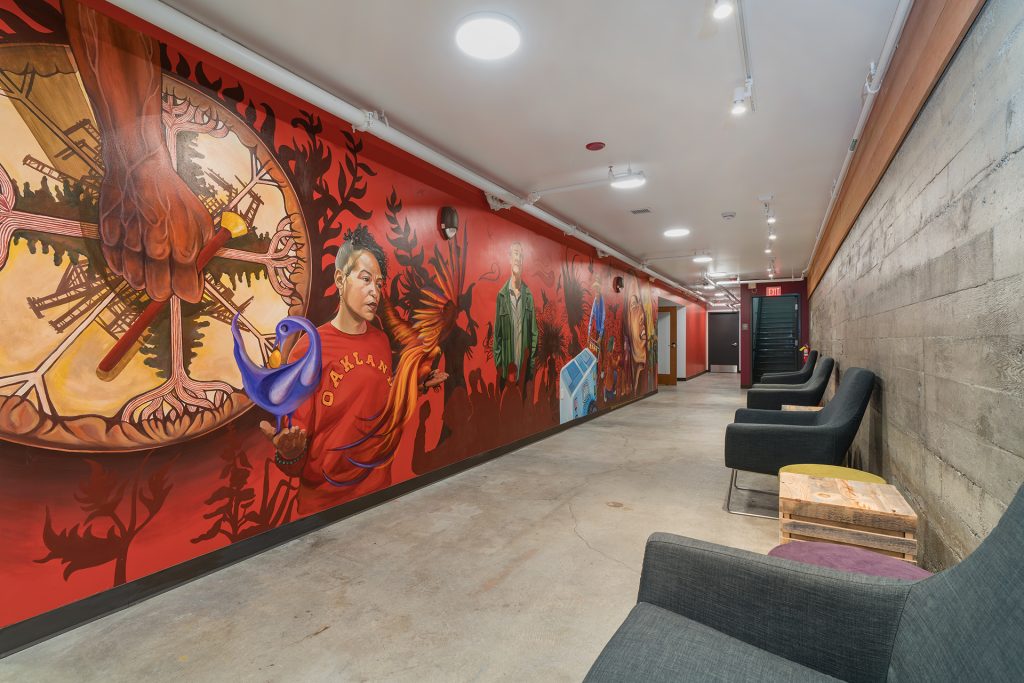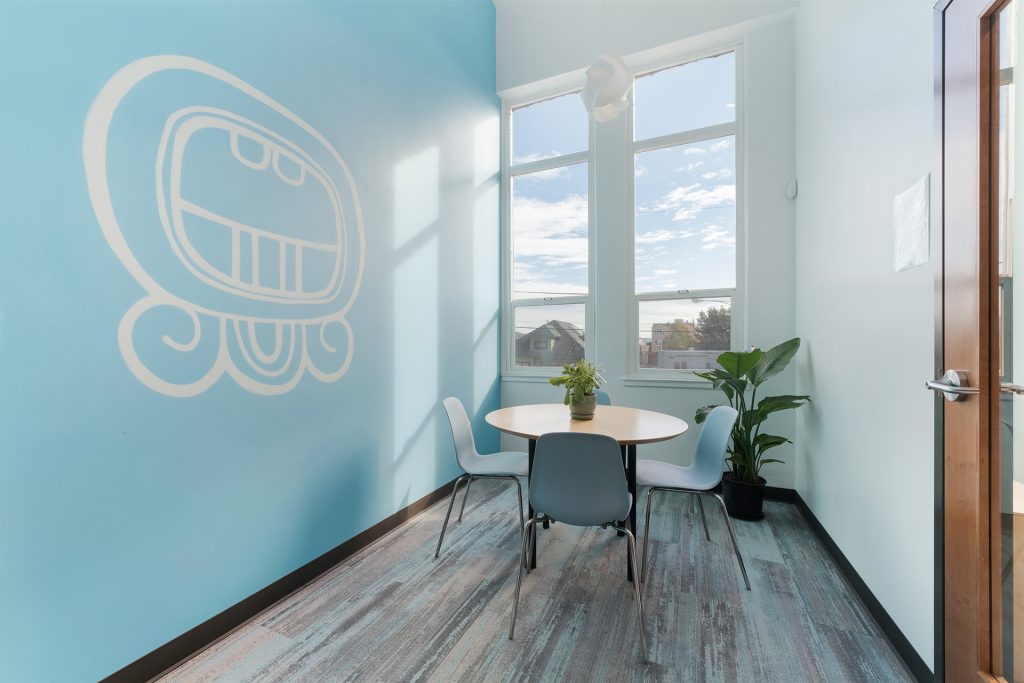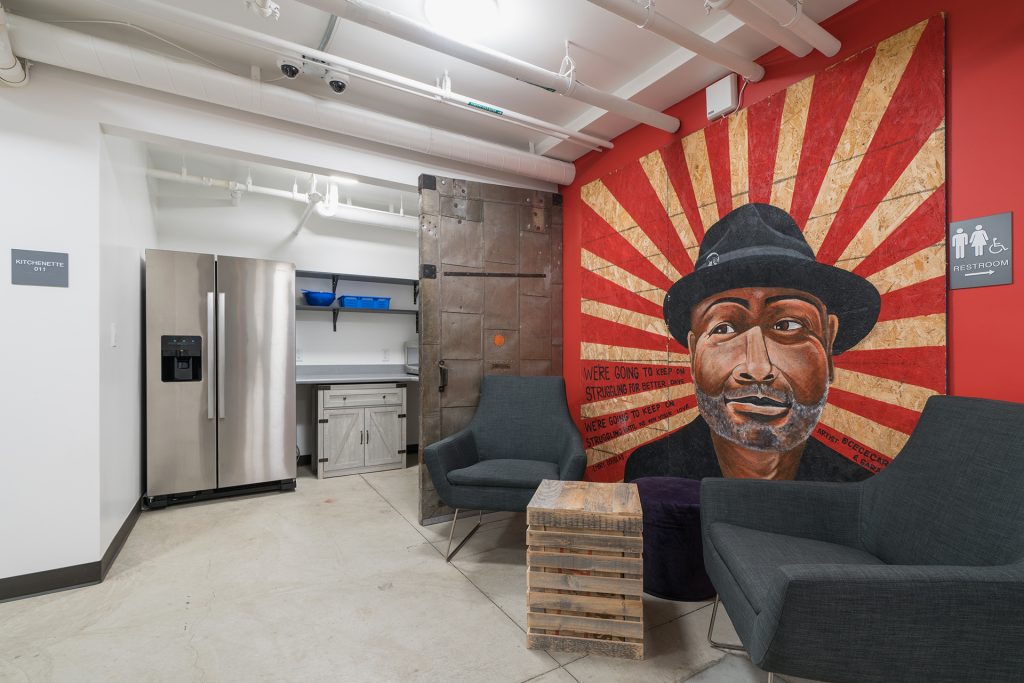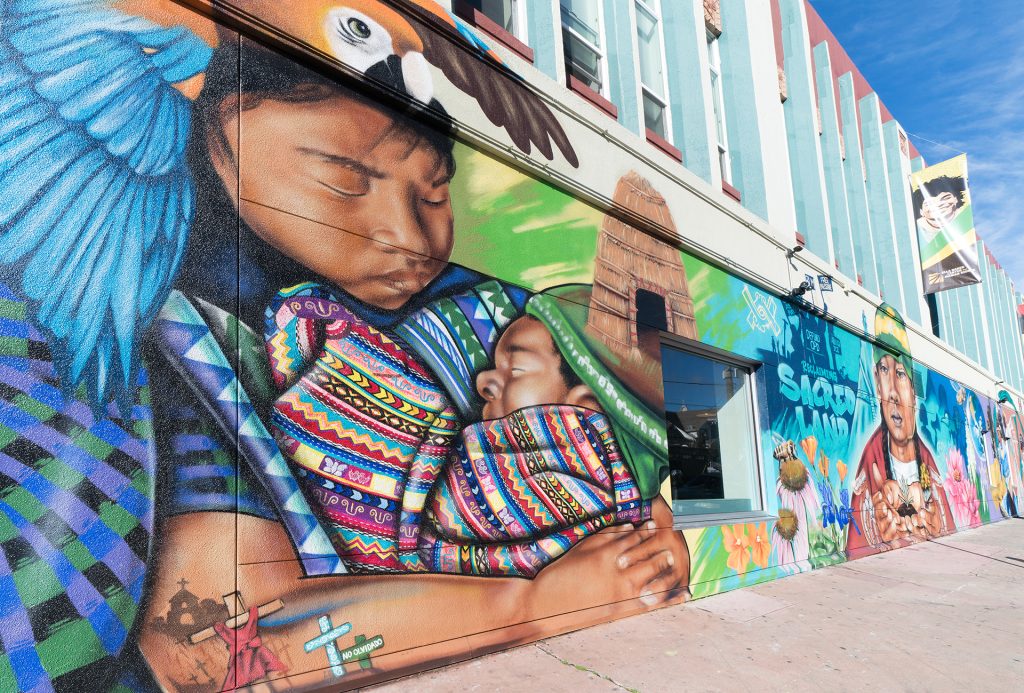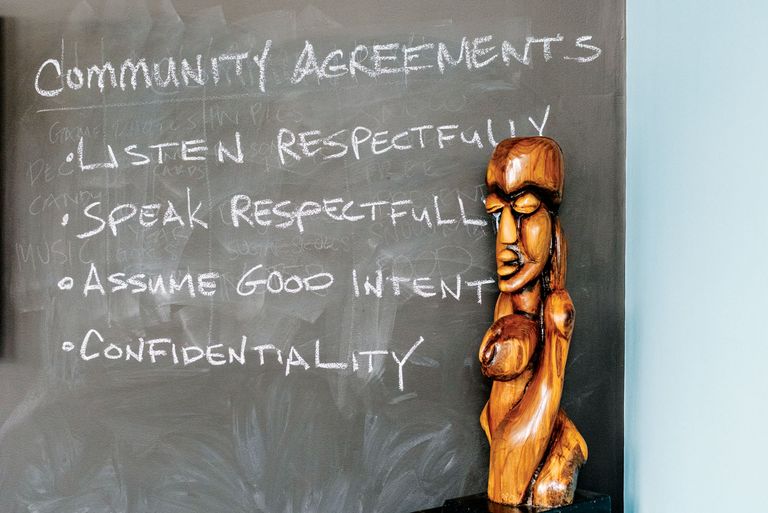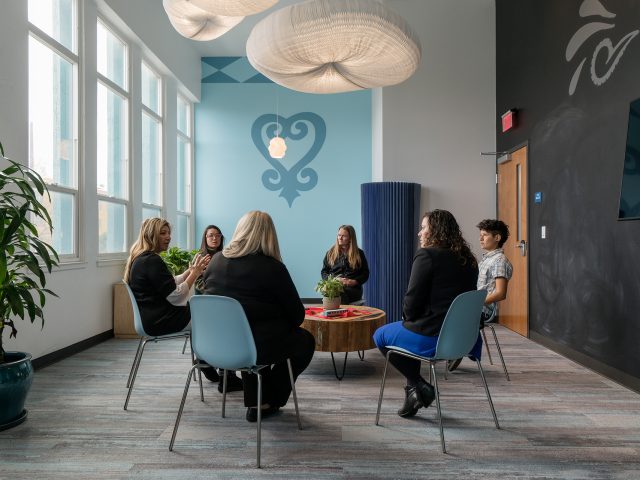
The value of Post Occupancy Evaluation
Post Occupancy Evaluations (POEs) are a vital yet often under-appreciated tool in shaping the future of building design. Traditionally, POEs emphasize the technical performance of a building—such as its systems, operations, and energy efficiency—but their potential goes far beyond these metrics.A well-executed POE offers numerous benefits, including (source):
- Delivering better value through informed design adjustments
- Reducing operational costs by enhancing efficiency.
- Minimizing delays and overspending during construction.
- Increasing user satisfaction by creating spaces that truly serve their purpose.
- Supporting sustainability by optimizing building performance and resource use.
Project Details
Project Type: Adaptive Reuse: Commercial, Retail, Restorative Justice (20,000 square feet)
Location: Oakland, California
Client: Ella Baker Center (EBC), Restaurant Opportunities Center (ROC)
Designing Justice + Designing Spaces Team: Shelley Davis Roberts, Kacper Bigosinski, Kyle Rawlins, Deanna Van Buren
Status: Construction completed 2019, Evaluation completed 2024
In 2024, DJDS completed a post-occupancy evaluation of the Restore Oakland building to determine the impact of the design on the building’s programming. (link to form)
Engaging guests and tenants of the building provided learnings about the impact of environments on people’s behavior, emotional/physical wellbeing, and sense of belonging.
As DJDS is a continuously learning organization, we are keen to continue improving our design knowledge to replicate improved versions of alternative to incarceration models across the country.
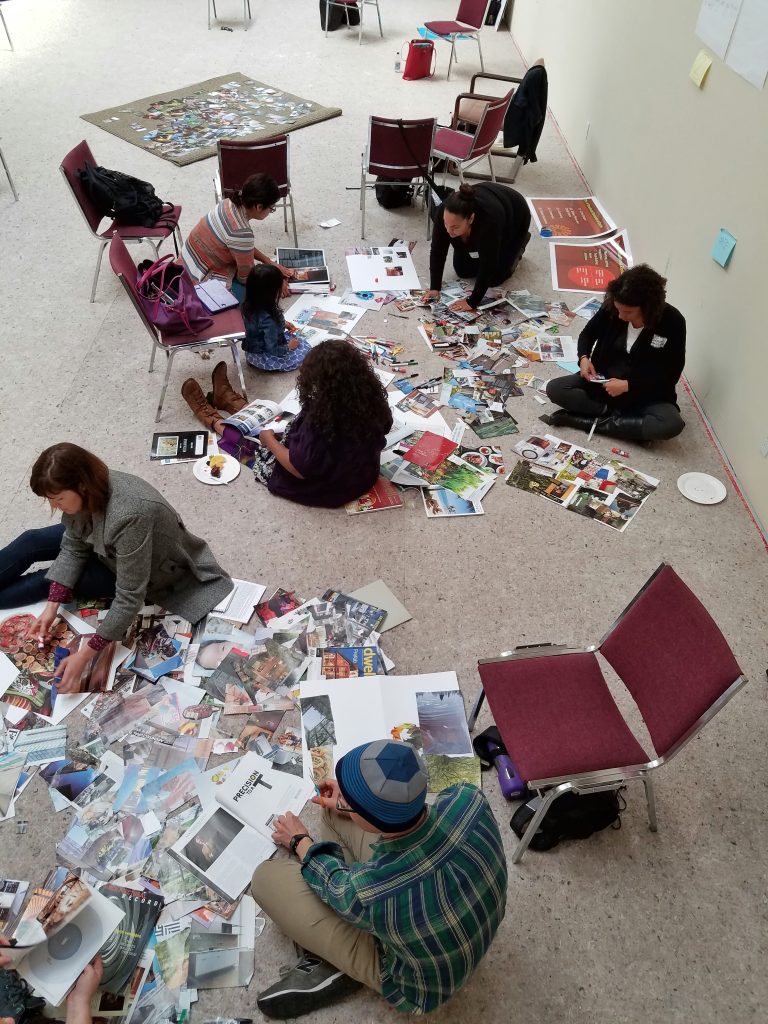

The Restore Oakland building is located in the heart of Fruitvale at 1419 34th Ave. Oakland, CA.
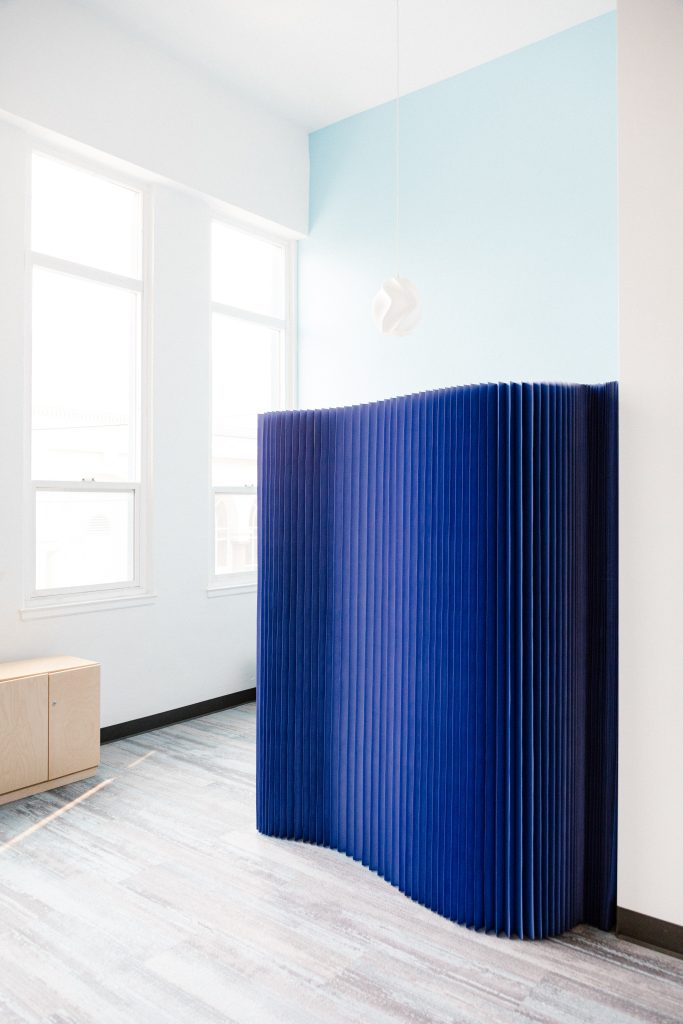
A commercial kitchen and open-plan dining room is accessed on the ground floor.
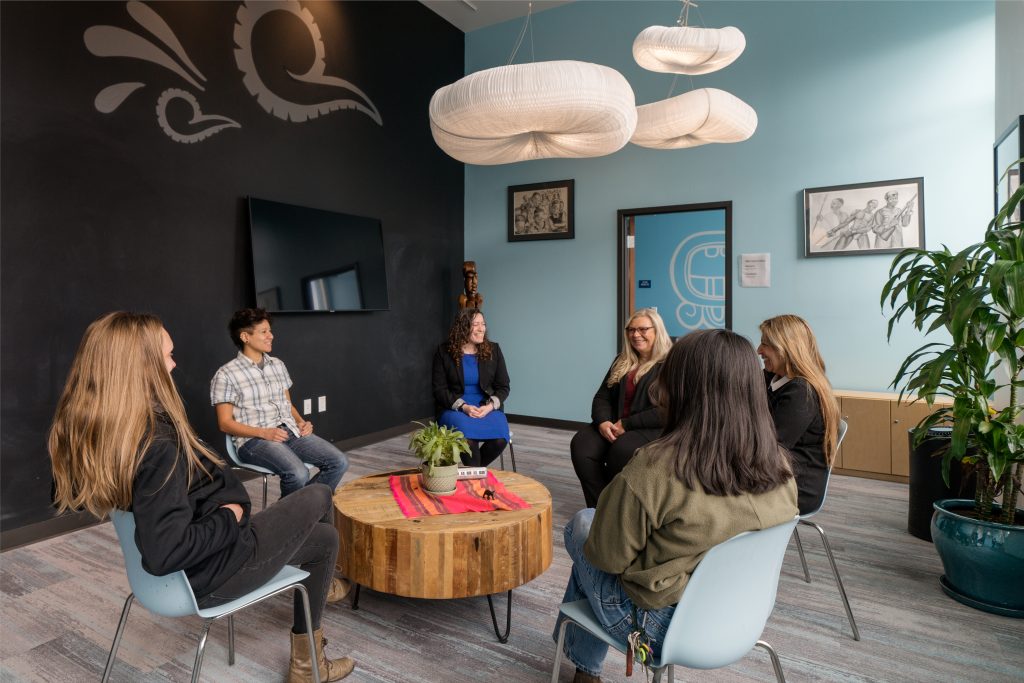
The building’s top floor overlooking International Blvd. maximizes natural light in the office space of the Ella Baker Center.
Evaluating spaces for Healing Justice
Evaluating spaces for Healing Justice
The DJDS POE is more focused on how the building and its attributes make people feel.
Of specific interest was assessing the impact of the design/layout characteristics on those who might have experienced trauma in their lives: such as former incarceration; disputes with housing and tenants rights; or the need for workforce development support.
A drawing of the Peace Room, on the second floor of the Restore Oakland building, details the trauma-informed design elements – particularly the neutral space so harmed and responsible parties can have different entrances – that make the space conducive to Restorative Justice.
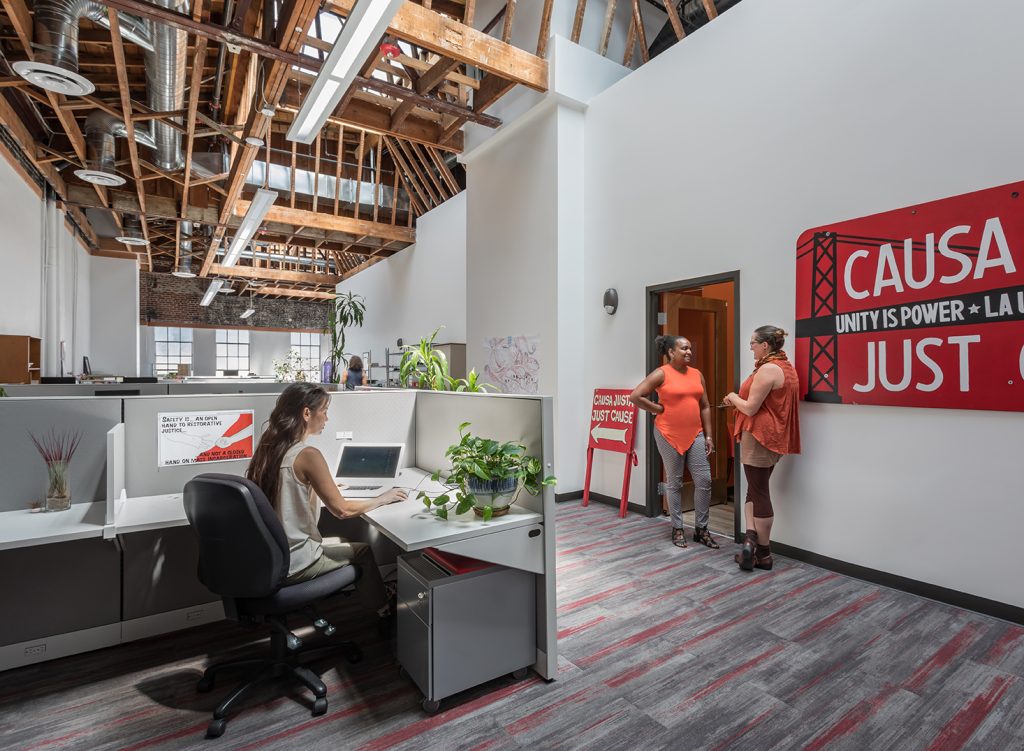
Engagement to Evaluation Timeline
Beginning 2016, Designing Justice + Designing Spaces (DJDS) had the privilege of partnering with the Ella Baker Center for Human Rights to turn their vision for a home — the Restore Oakland building — into reality.
Construction on Restore Oakland was completed in December 2019, and in 2023, DJDS began an evaluation of the building, to understand the impact of design and environmental conditions of the spaces on those using the space.
The Peace Room: for healing justice work
A critical part of the design of Restore Oakland was to include a space dedicated to Restorative Justice. Designing for restorative justice means ensuring dedicated spaces support programming where community members feel heard and supported, and in this case conducive to conflict resolution. Named the “Peace Room,” this room on the top floor embodies design characteristics directly tied to calming the nervous system – soft colors, lighting that resembles clouds, maximizing light for greenery, and culturally-relevant art set a calming tone in the space. In 2024, DJDS completed a post-occupancy evaluation of the Restore Oakland building to determine the impact of the design on the building’s programming.
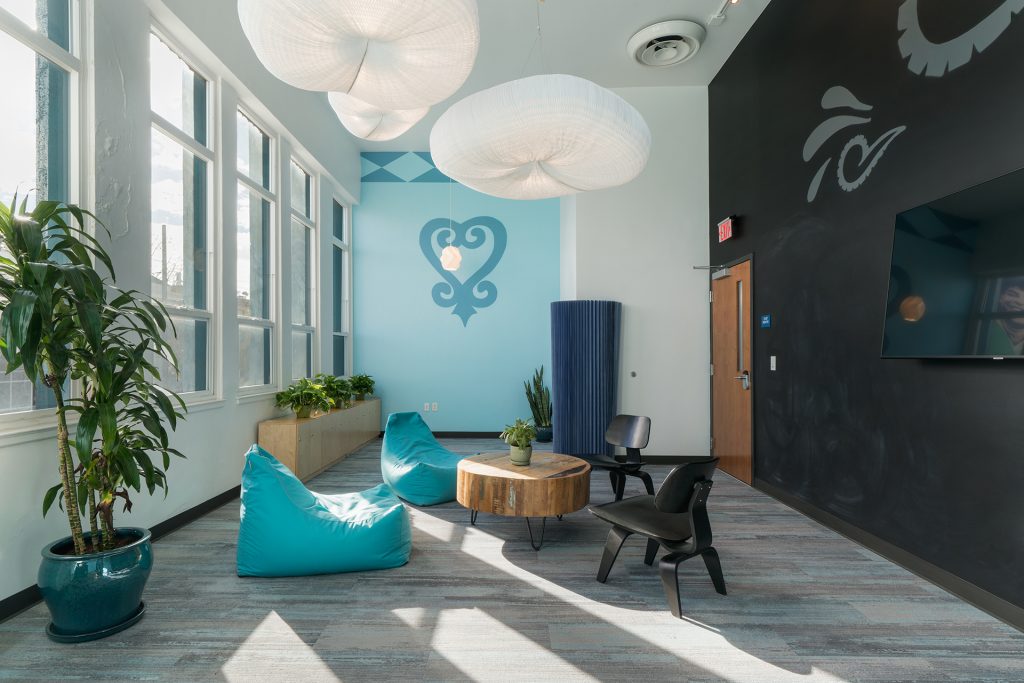
Many of the physical elements of the Peace Room contribute to a sense of healing and a feeling of calm, a desired sense when doing circle work.
``At Designing Justice Designing Spaces (DJDS), we approach POEs not just as technical evaluations but as opportunities to create spaces that foster dignity, equity, and community resilience. This unique perspective allows us to design environments that reflect the needs and values of the people who use them.``
The incorporation of art at multiple scales creates touch points where community can see their cultural identity reflected in the spaces around them.
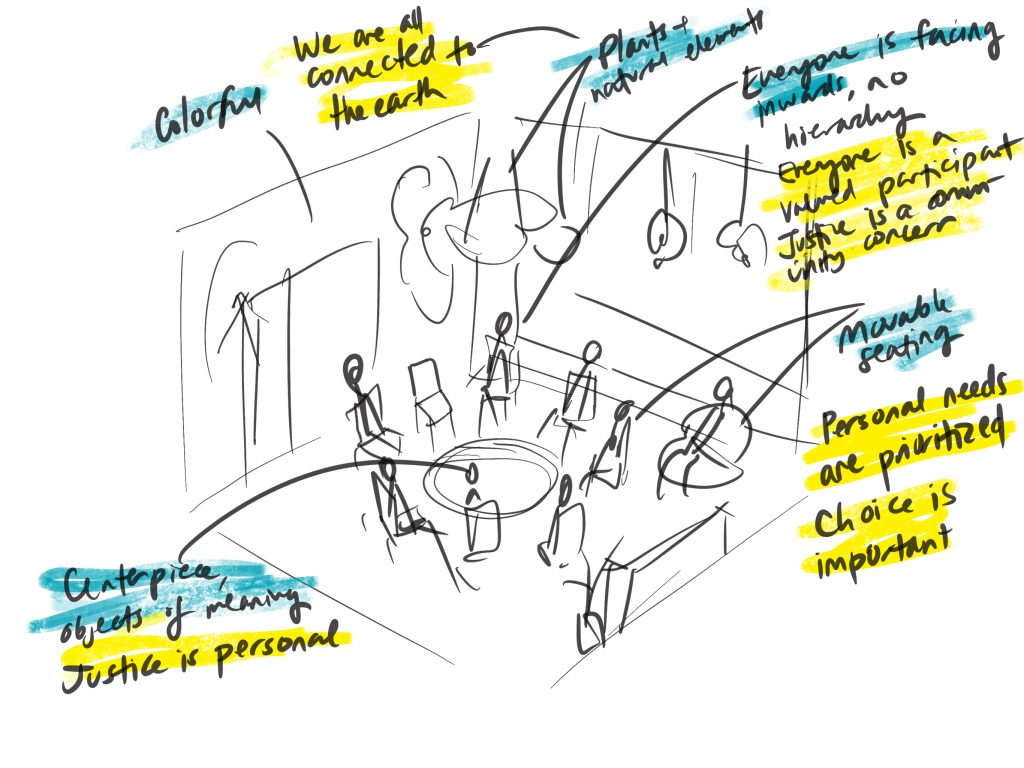
Restore Oakland combats rent prices by offering permanent homes to tenants like Causa Justa :: Just Cause, a housing and immigrant rights nonprofit.
“Spaces for Transformational Programming” – a new Post Occupancy Evaluation
In 2024, DJDS completed a post-occupancy evaluation of the Restore Oakland building to assess the impact of its design on the building’s programming and overall community well-being. This evaluation places emphasis on how the building’s layout and attributes affect individuals who may have experienced trauma, incarceration, or housing disputes, as well as those in need of workforce development support. Unlike traditional evaluations, this study focuses on how the design makes people feel, rather than on the technical performance of the building. To receive a copy of the Restore Oakland Post Occupancy Evaluation, please fill out the form below. Once submitted, you will receive an email with a link to download the report.
Learn more about our restorative justice projects:
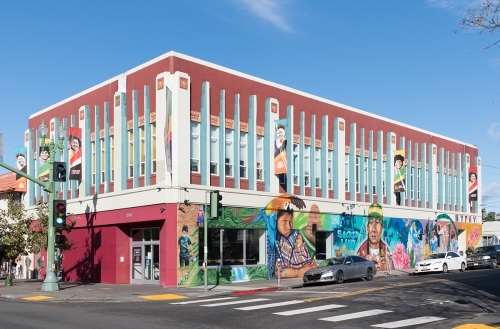
Restore Oakland |
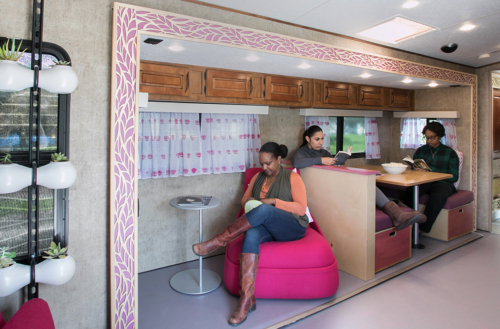
Women's Refuge Trailer |
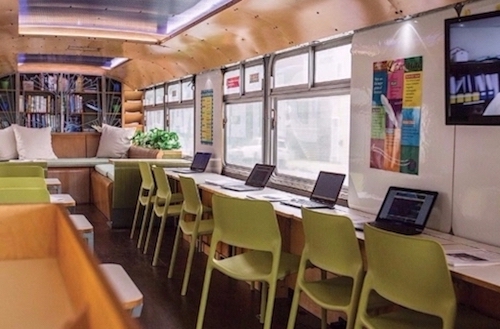
School on Wheels |


